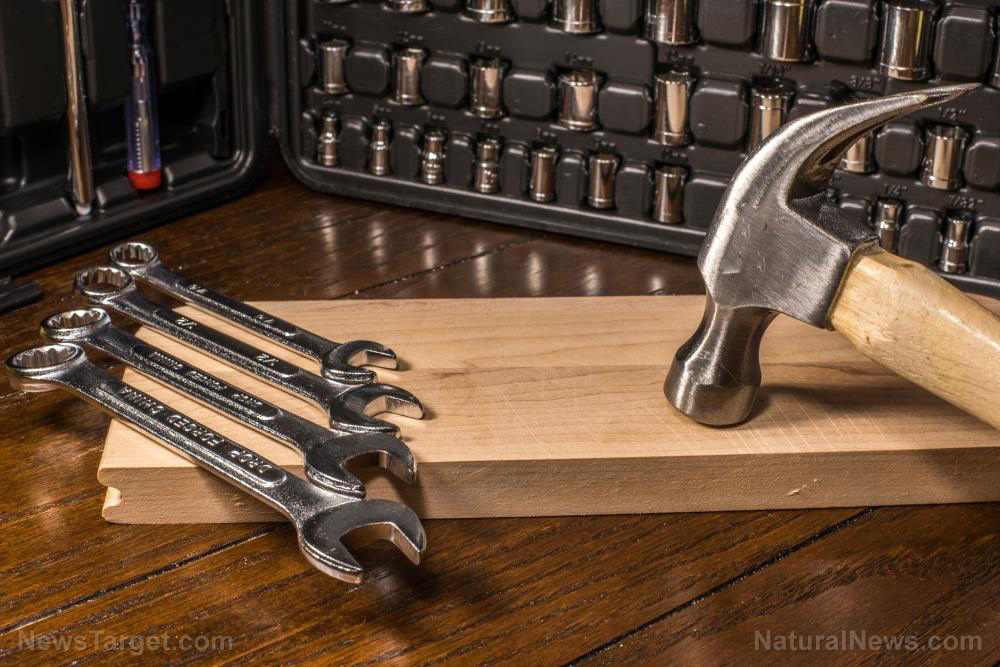Intro to building your own solar-powered water heater
03/06/2018 / By David Williams

The solar-powered water heater can be one of the most useful systems that you can implement in your own home. It offers many benefits, can be extremely cost-efficient, and you can save a lot of money by simply building such a system yourself.
Indeed, building your very own solar-powered water heater can be immensely rewarding. However, you have to make sure that you do it properly and that you know exactly what you want to get out of it so you don’t end up being disappointed by it.
So what exactly are you supposed to expect out of a DIY solar-powered water heater? And moreover, how are you supposed to build one on your own? You may not believe it, but the building part isn’t really that bad; what’s harder is figuring out the kinds of materials that you’re going to need based on your own personal preferences.
A solar-powered water heater can either be one of two things: active or passive. The active type systems are those that depend on external power sources in order to run pumps and circulate the heat that they manage to gather. Meanwhile, passive systems don’t require any of these. In relation to this, there’s a system called the integral passive solar water heater (IPSWH), which is an effective, inexpensive, and easy-to-build solar water-heating system.
IPSWH systems are often referred to as batch heaters, and are often described as the simplest form of all the passive systems. They are usually praised for their long-term reliability and lack of a need for an external power source while being available at a low cost. For this reason, it’s a favorite among those who like to build their own solar-powered water heaters.
With all of that said, here is a quick list of five different kinds of batch heaters that are typically in use today:
- Single-tank batch heater — This type of heater is perhaps the most economical and least complicated of the bunch, relying on a lot of easily sourced materials to be constructed. You can use a simple breadbox design to keep things simple, and go for a discarded standard electric water heater tank that’s cased inside an insulated plywood box or an old refrigerator or freezer shell. You’d just need to use glass or fiberglass as glazing material to cover the box to be all set.
- Vertical three-tank batch heater — Like an upgraded version of the single-tank variety, the three-tank batch heater turns up the performance with more storage space and collector area. You can build this with the use of three separate water heater core tanks that are enclosed in a well-insulated box that is large enough.
- Greenhouse batch heater — If you’re aiming for the best option in terms of performance and freeze protection in colder locations or colder times of the year, this one may be the best ones available. In most configurations, the solar water heater is placed near the top of the greenhouse roof in order to take full advantage of the most sun exposure possible. Some extra insulation may be necessary to protect the pipes from the coldness of the night.
- Building-integrated batch heater — These systems are usually built right into the attics of homes, or wherever it can receive more protection against freezing. Its pipes can be installed in heated space, and the heater can usually stay in place despite any future renovations that need to be done in the roof area of a house. The key thing to remember for this type of batch heater is accessibility: make sure it can be reached quite easily in case it needs to be repaired or replaced.
- Solar shower — Finally, here’s a tiny small-scale batch heater that often uses a clear and black plastic design that’s portable and easy enough to get up and running. These are meant mainly for camping purposes, as they can be deployed rather quickly and start to offer hot water in around an hour or less. The brighter the sun shines, the more effective it is.
With the above, you should be able to determine exactly what kind of solar-powered water heater is perfect for your needs.
Learn more ways of becoming self-sufficient in Disaster.news.
Sources include:
Tagged Under: how-to, inventions, preparedness, self-reliance, solar, solar panels, solar power, water heater




















